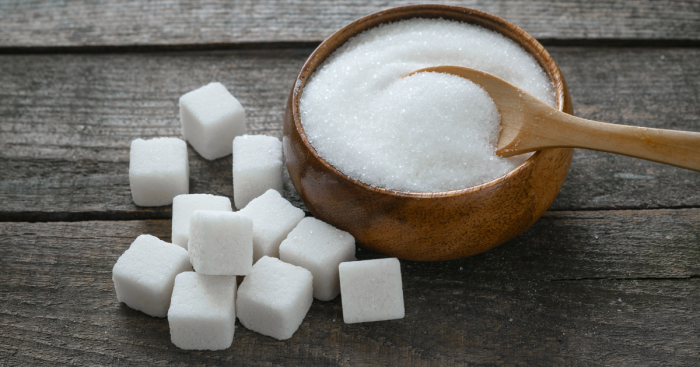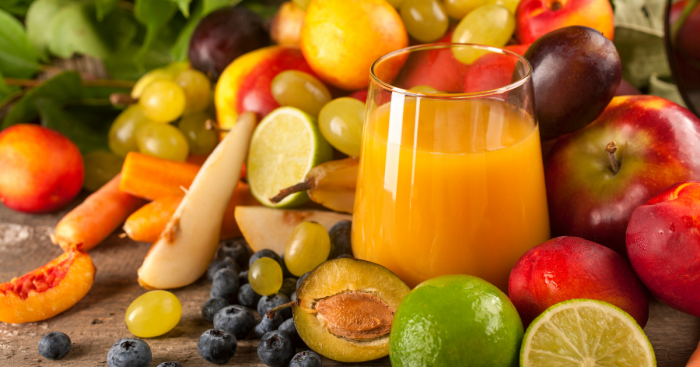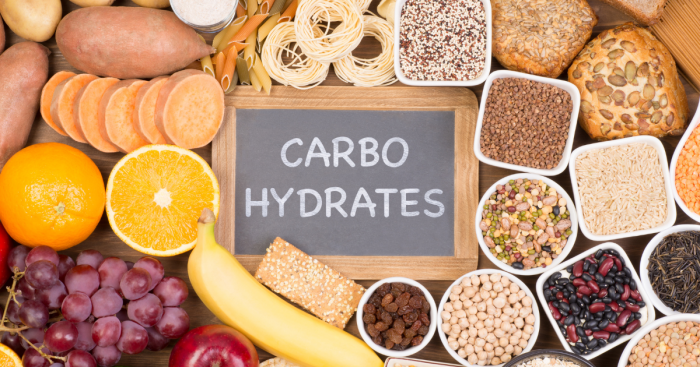Sometimes parents worry if they are feeding their children right. There is so much information (and misinformation) out there that sifting through what’s myth and what’s fact can be downright confusing.
To make feeding an even more daunting journey, well-meaning relatives, friends and even strangers may tell you things that might confuse the issue further.
To set the story straight, here are nine of the most prevalent myths debunked so that you can be on the right path to wholesome child nutrition.
Myth 1: Sugar is Bad for Health

Fact: In an age when we are all aware of the “evils” of sugar, it is natural to assume that all sugar is bad. Actually, not all sugar is bad for health. In fact, some sugars are essential for health. Glucose[1], for example, is needed for the proper functioning of every organ system in the body, especially the brain. It is the brain’s number one food and the body’s main source of fuel. Glucose is made by the body and comes from the food we eat. There is no need, however, to add more glucose into the diet.
To understand sugars in our diets, there are basically two types: Added refined sugars, and naturally-occurring sugars. Added refined sugars are sugars like white and brown sugar. These have been processed and stripped of their nutrients and are added into processed foods to make them sweeter and more palatable, especially to children.
Naturally-occurring sugars, on the other hand, are those found in whole fruits, vegetables, grains and milk. Naturally-occurring sugars contain vitamins, minerals, and fibre that the body needs to make glucose to aid in important bodily functions and to give us energy.
It is added sugars that you want to avoid when choosing store-bought food and beverages for children. Consuming too much added sugars can lead to obesity, tooth decay, cardiovascular disease, diabetes as well as sleep and learning issues among other related problems. Do read the label before buying.
Myth 2: Toddlers Can Consume Sugar after the Age of Two
Fact: The Centers for Disease Control and Prevention (CDC) has stated that children younger than 24 months should avoid added sugars[2]. However, this doesn’t mean that they should binge out on sugar when they hit age two. The problem with consuming sweet foods and drinks is that it can be habit-forming. Children are naturally drawn to sweet tasting foods and will likely develop a sweet tooth if they are fed sugary foods all the time. If you start introducing sugar into their diets from as early as age two, they will develop a taste for sweet and will choose these foods over a wholesome diet as they grow up. On top of that, feeding them ice cream, sugar-sweetened beverages, fizzy drinks, syrups, cordials, doughnuts, candy bars and desserts will fill their small stomachs up leaving no room for the nutritious food you want them to eat. Eating all these sweet empty calories will predispose them to chronic diseases, not to mention obesity, as time goes on.
Although it is difficult to find products without added sugar these days, you can minimise your toddler’s consumption of sugar by offering plain water or plain milk instead of sugary drinks and beverages. It has been found out[3] that more than food, Malaysians are consuming loads of added sugar through drinks.
Myth 3: Juicing is Equivalent to Eating Fruits

Fact: Freshly squeezed natural fruit juices make a refreshing drink but although it comes from a whole fruit, the juice is not as nutritious as eating the whole fruit itself. This is because juicing removes the pulp and skins which provide fibre and additional nutrients bound to them. Consuming fibre is necessary for digestive health and appetite regulation. Although the liquid will contain most of the vitamins, minerals and plant chemicals (phytochemicals), once the pulp and skins are removed what’s left in the juice is just a lot of sugar (fructose) and calories.
Moreover, the juice is light and oxygen-sensitive, leaving its nutrients vulnerable to damage[4]. This can further decrease the nutrient content and quality of the juice compared to the original whole fruit.
Myth 4: Clear Sodas are Healthier than Coloured Ones
Fact: All sodas or carbonated drinks are high in added sugar[5] and do not belong anywhere in a healthy diet. In fact, a soda regardless of its colour, contains nothing but sugar. And artificial flavouring. A 12-ounce (375-ml) can of a very popular brand of clear soda typically contains nine teaspoons of sugar and packs 140 calories plus 38 grams of carbohydrates[6] − all of which come from the added sugar.
While it is true that clear sodas don’t often contain caffeine like their darker coloured counterparts, their high sugar content makes them all unhealthy. If children like the fizziness of the drink, offer them sparkling mineral water instead.
Myth 5: Carbs are Bad for Children

Fact: On the contrary – carbohydrates are the primary source of energy for the body[7] and are essential for your child’s growth. In fact, a child may need to eat more carbs if he or she is into sports or leads a very active lifestyle. Don’t forget, they also have higher metabolisms and their bodies are growing. Therefore, they require a constant supply of fuel that carbohydrates provide.
There is a caveat here though. Carbs should be eaten along with proteins, fats, vitamins and minerals which can be found in the variety of foods we eat everyday such as meat, grains, dairy, fruits, vegetables, legumes and so on.
There are basically two types of carbohydrates: Simple and complex. Simple carbs are white flour-based products including white bread, white rice, sugar and so on. Complex carbs are whole grains, whole wheat bread, brown rice, oats, fruits and beans.
Simple carbs digest easily and can cause a spike in blood sugar that can leave a person hungry and tired shortly after. Complex carbs take longer to break down and this can give the body more sustained energy. Aim for complex carbohydrates when children need an energy boost.
Myth 6: Frozen Fruits and Vegetables are not as Healthy as Fresh ones
Fact: Frozen produce are nutritionally similar to fresh produce. In fact, research shows[8] that frozen fruits and vegetables may have higher Vitamin C levels than produce that has been stored in the house for several days.
Some of the frozen fruits and vegetables available here include frozen peas, broccoli, Brussel sprouts, mixed corn, carrots and peas, blueberries, strawberries, and many others. Naturally, frozen foods have a longer “shelf life” and these would be convenient for you to cook should you have no time to get fresh produce.
Myth 7: Dried Fruits are not as Nutritious as Fresh Fruits
Just like frozen fruits, dried fruits are just as nutritious as their fresh counterparts. Because they have had their water removed, they are smaller but their nutrient value is exactly the same as fresh fruit, (except for Vitamin C which is taken out along with the water). When compared, dried fruits contain more fibre and more antioxidants called phenols than fresh fruit, ounce for ounce[9]. Because they are small, it’s easy to pop 50 raisins into the mouth without realising it, whereas it’s not so easy to eat 50 fresh grapes at one sitting because you’d be too full. In this sense, one can put on weight from eating too many dried fruits. But from a nutritional standpoint, dried fruits are just as nutritious as fresh fruits and make good snacks for children instead of junk crisps and chips. A lot of store-bought dried fruits have added sugar, salt, preservatives and artificial flavouring unfortunately. But you can dehydrate your own fruits and vegetables to make snacks for the whole family if you have a dehydrator. This way you can control the addition of unnecessary additives.
Myth 8: Once a Toddler rejects a Food, there is No Point in Serving it Again
Fact: A picky eater may reject or refuse to eat a food or vegetable but this doesn’t mean you shouldn’t serve it. It has been said that it may take up to 20 to 30 tries before the child will try the food[10]. Children at this age are in the experimental and discovery stage of their lives, therefore exposure to the food is key to having them accept the food. Besides, they are wont to change their minds and taste can be acquired. The best way to ensure they develop a taste for say − broccoli – will be to serve it in different cooking styles until the child develops a taste for it.
Children also have a different sense of taste than adults. Infants and toddlers have around 30,000 tastebuds spread throughout their mouth[11] and they are all programmed to have a preference for sweetness. This is to make them receptive to breastmilk which has a light vanilla flavour[12]. By the time children reach adulthood, these tastebuds would have dwindled down to 10,000 mainly on the tongue. So, how you taste broccoli will be very different from how your child will taste it.
Myth 9: Fat is Bad and Children Should Eat Low Fat Options.

Fact: Fat has an important place in a child’s diet. Until the age of two, infants and toddlers should be eating full fat foods as fat is needed for their brain development. Additionally, fat is a vital source of energy for their high physical activity and growth. Infants and toddlers under the age of two need more fat for their brain development than children over the age of two[13]. For those over two, you can try to limit saturated fats to less than 10% of the diet.
There are mainly two types of dietary fats: Saturated fats and unsaturated fats[14]. The term describes the chemical make up of the fatty acids.
Saturated fats are those that turn solid at room temperature. Some common sources of saturated fats are those that come from meat and milk.
Unsaturated fats are those that remain liquid at room temperature. Some common sources of unsaturated fats are those that come from vegetables, nuts, fish. There are two types of unsaturated fats: monounsaturated and polyunsaturated. These at two are the good fats[15].
Both children and adults must consume fats, especially good fats. Apart from being essential for brain growth and function, eye and neural development and supplying fuel for the body, these good fats help the body to absorb fat-soluble vitamins such as Vitamins A, D, E and K which can only be absorbed if there is fat in the person’s diet. These fats are also the building blocks of hormones and the immune system. They also make food delicious and help people feel full longer so they are less likely to overeat.
The Two Types of Good Fat
- Monounsaturated Fats[16] are found in avocados, certain nuts and seeds (which should be ground when served as they are choking hazards to young children) and some vegetable oils like olive, sesame, peanut, canola and safflower. These fats support a healthy cardiovascular system and reduce inflammation. They are also rich in the antioxidant Vitamin E.
- Polyunsaturated Fats (Omega-3 Fats)[17] are DHA, EPA and ALA – essential fatty acids that the body needs but cannot produce by itself. DHA and EPA are found in fatty fish such as salmon, mackerel, sardine, tuna as well as mussels and certain algae. ALA is found in chia, flax and hemp seeds as well as soybeans. All three essential fatty acids are found in eggs, and fortified foods such as formula milk or cereals.




